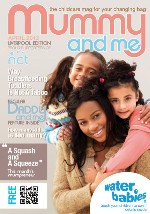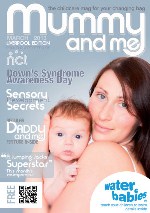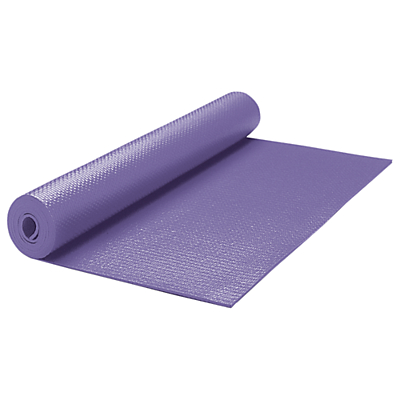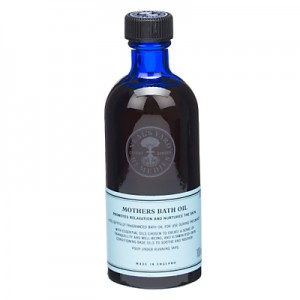Tag: pregnancy
Wobbles When Weaning
Before long you will have mastered the art of weaning your baby with pureed fruit and vegetables. After a couple of months of puree your baby will be ready for the next stage of weaning, eating foods with more texture.
Adding texture is an important stage in weaning and development for your baby. It helps to strengthen jaw muscles, encourages the development of speech, helps to ensure healthy teeth and prepares your baby for chewing food and eating family meals.
The best advice I received when I was introducing texture to my baby was to take things slowly. There’s no need to get anxious or frustrated if your baby spits out the lumpy bits or refuses textured food altogether.
You may find your baby takes to textured food straight away or it could be some time before your baby is happy chewing and swallowing lumpier food. Either way, there are things you can do to help make this next stage of weaning as easy as possible for both you and your baby.

Tips for the Smooth Introduction of Texture
1. Until your baby is at least ten months old they should be able to easily mush any lumps in their mouth, with or without teeth.
Lumps in food need to be small, soft and manageable for your baby.
2. Begin by slowly adding texture to the foods your baby likes.
Introducing texture to your baby’s puree will most likely be met with a surprised face! You can start by adding grated fruit, mashed vegetable or finely chopped food to your baby’s puree which is a subtle way of encouraging your baby to eat thicker and lumpier food. Introduce new food textures one at a time.
3. Keep baby interested in texture.
When your baby is happy with some texture you can start to vary the texture you give by adding baby pasta shapes or grains such as couscous into their favourite meals.
4. Offer your baby finger foods if they’re developmentally ready.
Babies will often eat lumpier foods if they’re feeding themselves.
5. Don’t force your baby to try something if they don’t want to.
The key is to keep things relaxed and fun so your baby looks forward to mealtimes. This helps to avoid fussy eaters later on.
Initially, I found my baby was happy to eat food with a thicker consistency but she didn’t enjoy food with lumps in it. She would spit the lumps out or refuse to try what I was offering. I took my time and continued to give her food with texture for several weeks until one day she just ate the spoonful of lumpy food as if it were the most normal thing to do!
 Lydia Oliver – Nutritional Advisor Only Best For Baby
Lydia Oliver – Nutritional Advisor Only Best For Baby
This article was published in the April 2013 edition of Mummy and Me Magazine.
I offer one to one nutrition programmes for breastfeeding, post pregnancy weight loss, weaning, weight management and health. Contact me.
Food for Thought
Weaning your baby from the breast or bottle is an exciting time for you and your baby. You’re about to introduce new tastes, textures and foods that will help provide the nutrients your baby needs to develop and grow into a healthy child.
Waiting until your baby is ready to process solid food lessens the chance of developing food allergies. Health experts recommend full term babies begin weaning at six months to give baby’s digestive system time to mature. At six months babies start to need a higher level of nutrients, especially iron, which they can’t get from breastmilk or infant formula alone.
Nutritionally, babies still need breastmilk or infant formula until they’re one year old and emotionally your baby receives a great source of comfort and security from nursing.
In the beginning weaning is all about taste and exploration. For the first couple of weeks offer a teaspoon or two of solids once a day when baby is slightly peckish. Pureed pear, apple, sweet potato, parsnip and carrot are sweet tasting and gentle on baby’s tummy. Ripe banana and avocado can be mashed to achieve a smooth consistency. Baby rice and baby cereals are a good introduction to grains and can be mixed with your baby’s usual milk.
It’s beneficial to introduce foods one at a time over a few days to check for any allergic reactions. Foods that most commonly cause allergies are wheat, eggs, shellfish, milk, nuts and seeds. You should seek urgent medical help if you think your baby is having an allergic reaction.

Foods to avoid when weaning are salt, sugar and low fat foods which are nutritionally unsuitable. Honey is a source of sugar and should not be given to babies under one year as it can contain bacteria. Cow’s milk should only be used in cooking until baby is at least one year. Nuts should not be given to children under the age of five due to the risk of choking.
Let your baby lead the way. At six months I started to wean my baby with pureed fruit and vegetables and by seven months she was showing an interest in using her fingers to eat so we moved to more of a baby-led weaning approach.
Take things slowly to give you and your baby time to adjust to weaning and allow baby to enjoy a variety of foods. Weaning is an incredible developmental stage for your baby. Eat together as a family, have fun and accept things will get messy!
 Lydia Oliver – Nutritional Advisor Only Best For Baby
Lydia Oliver – Nutritional Advisor Only Best For Baby
This article was published in the March 2013 edition of Mummy and Me Magazine.
I offer one to one nutrition programmes for breastfeeding, post pregnancy weight loss, weaning, weight management and health. Contact me.
Healthy Pregnancy Tips
I want to share the things that helped me to enjoy a healthy and happy pregnancy.
These are my top Healthy Pregnancy Tips which I found easy to practice and essential for relaxation and keeping me supple.
Exercise gently everyday
A gentle walk and some Pregnancy Yoga worked wonders for my flexibility and my mood when I was pregnant. I used a Gaiam Premium Yoga Mat. It’s thicker than a standard yoga mat so it gave me extra cushioning which was really needed during the later months of my pregnancy. It has a great non-slip surface so it stayed in place during my yoga workout and stretching.
Relax, don’t stress!
I found little treats worked wonders. I loved having a warm bath using Neal’s Yard Organic Mother’s Bath Oil for deep relaxation, listening to my favourite music and reading the books on my reading list while I still had some time to myself.
Eat healthy, organic foods
As a Nutritional Advisor and Mum I always make the following recommendations for pregnant women.
Look after your back
Being pregnant naturally puts strain on your lower back as your tummy blooms.
- Don’t lift anything heavy.
- Wear comfortable shoes.
- I used a maternity support pillow to support my back when I was sleeping or relaxing.
Pelvic floor exercises
These are very important during pregnancy and help to strengthen your pelvic floor so your body can support the weight of your pregnancy. Pelvic floor exercises help to prevent stress incontinence.
If this is your first pregnancy you’re probably wondering what stress incontinence is! I certainly didn’t have a clue until we discussed this in our NCT Antenatal Classes. Stress incontinence occurs when you have weak pelvic floor muscles and can cause leaking urine when you cough, sneeze, laugh or exercise.
Here’s a really useful link from the NCT on how to exercise your pelvic floor during and after pregnancy.
Take a Pregnancy Multivitamin
Despite having a healthy diet, as soon as I knew I was pregnant I started taking Vitabiotics Pregnacare Plus Omega 3 and continued to take these throughout my entire pregnancy. These multivitamins plus Omega 3 ensured my baby and I had all the essential nutrients we needed, including the recommended level of 400mcg folic acid.






